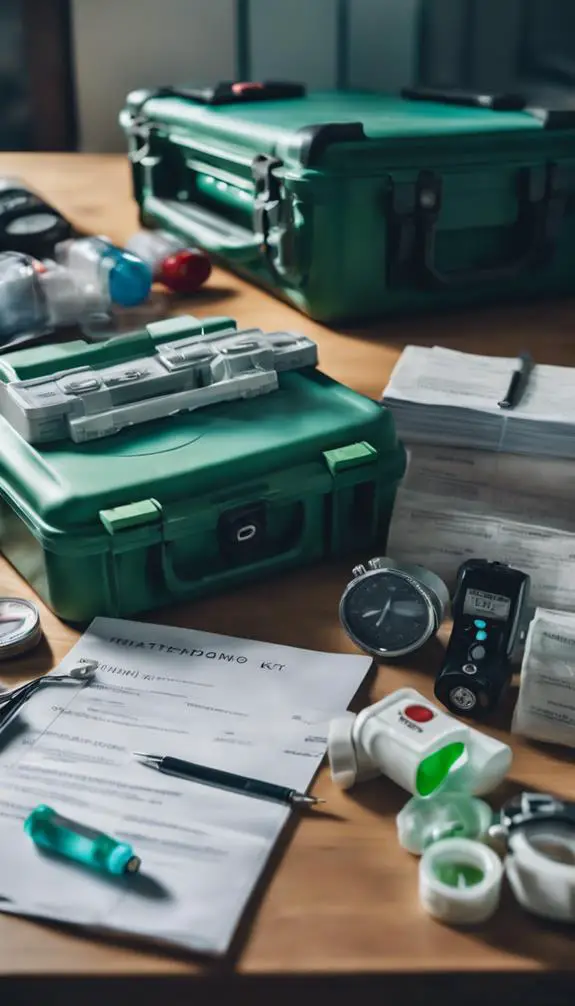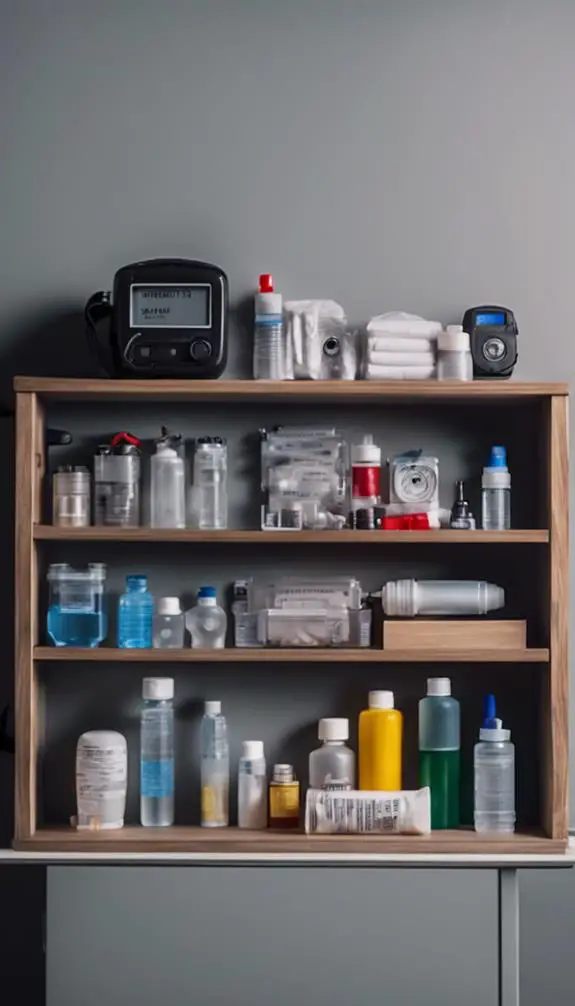As you consider taking the first steps towards doomsday prepping, you're likely wondering where to start. You're not alone – many people are waking up to the importance of being prepared for the unexpected. By setting clear financial goals and building an emergency fund, you'll be taking a vital step towards securing your family's future. But that's just the beginning. You'll need to think about stockpiling essential items, creating a family plan, and staying informed about emerging threats. The journey ahead won't be easy, but with a solid foundation in place, you'll be better equipped to face whatever the future may hold.
Summary
- Start by setting clear financial goals and building an emergency fund to cover 3-6 months of living expenses.
- Stock a disaster pantry with non-perishable, nutritious items and implement a supply rotation system to ensure freshness.
- Create a family plan, identifying meeting points, escape routes, and emergency contact numbers to ensure everyone's safety.
- Invest in essential items like flashlights, batteries, and a portable stove to sustain you and your family for at least three months.
- Stay informed about current events, emerging threats, and developing situations through reliable news sources and official reports.
Building Your Emergency Fund

When disaster strikes, you'll be grateful for a financial safety net.
Having a solid emergency fund in place can mean the difference between weathering a crisis and financial ruin.
To build your emergency fund, start by setting clear financial goals. Determine how much you need to save and set a realistic timeline.
Next, develop a savings strategy that works for you. Consider setting up automatic transfers from your paycheck or setting aside a fixed amount each month.
Aim to save three to six months' worth of living expenses in a easily accessible savings account. This fund will provide a cushion in case of unexpected expenses, job loss, or natural disasters, giving you peace of mind and financial freedom.
Stocking a Disaster Pantry
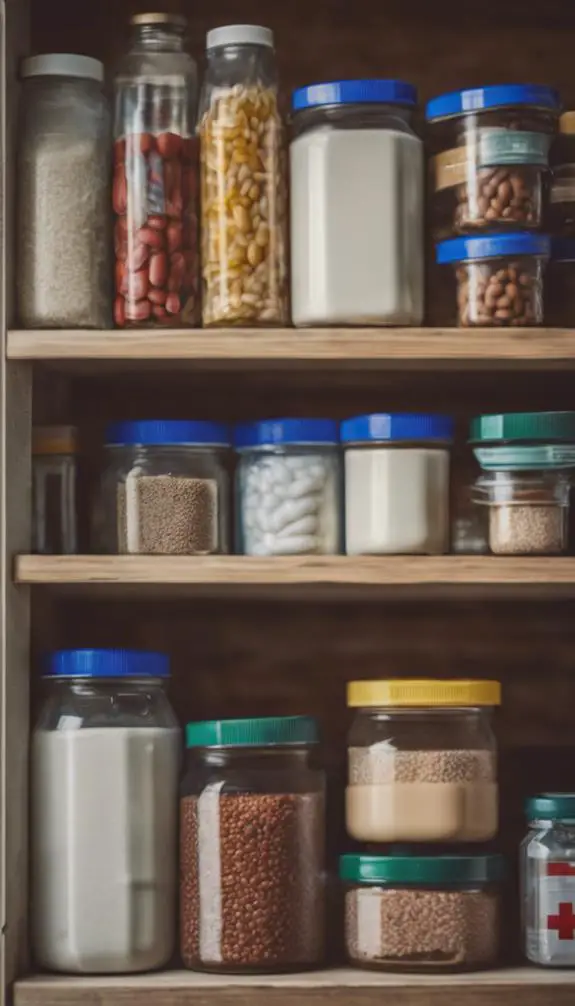
Emergency food supplies are a lifeline during disasters, providing sustenance when grocery stores are closed or inaccessible.
You'll want to stock a disaster pantry with non-perishable items that are easy to prepare, nutritious, and have a long shelf life. Focus on staples like canned goods, dried fruits and vegetables, whole grains, and protein sources like beans and nuts.
Consider your dietary needs and preferences when selecting items. Organize your pantry by categorizing items into groups, such as breakfast foods, snacks, and meals.
Label and date each item, and store them in a cool, dry place. Rotate your stock every six months to guarantee freshness.
With a well-stocked pantry, you'll be prepared to feed yourself and your loved ones during uncertain times.
Creating a Family Plan
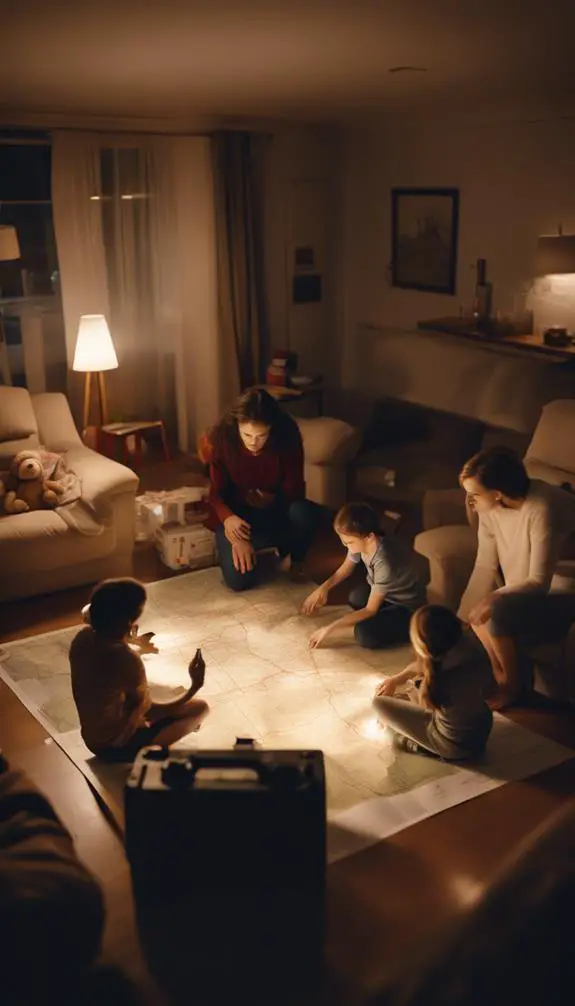
A solid family plan is your roadmap to safety during a disaster, guaranteeing everyone knows what to do and where to go.
Hold regular family meetings to discuss potential disaster scenarios and assign emergency roles to each member. This will help identify strengths and weaknesses, allowing you to create a plan that plays to your family's strengths.
Identify meeting points, escape routes, and emergency contact numbers. Designate a meeting spot outside the home in case of a fire or evacuation. Assign roles such as first aid, communication, and navigation to certify everyone knows their responsibilities.
Essential Items to Store
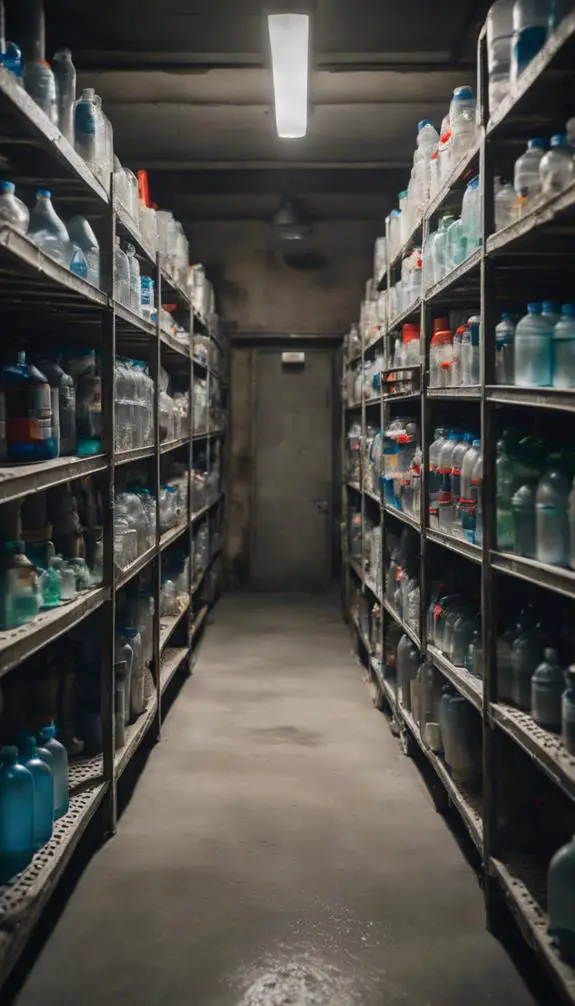
Now that you have a solid family plan in place, it's time to stockpile the items that will help you execute it effectively.
Focus on essential items that will sustain you and your family for at least three months. Food storage is critical; stock non-perishable, high-calorie foods like canned goods, dried fruits, and nuts. Don't forget a manual can opener!
Implement a supply rotation system to guarantee oldest items are consumed first. Store personal hygiene items, first aid supplies, and medications.
Consider adding tools like flashlights, batteries, and a portable stove. Remember to store items in a cool, dry place, protected from the elements.
Water Purification Methods
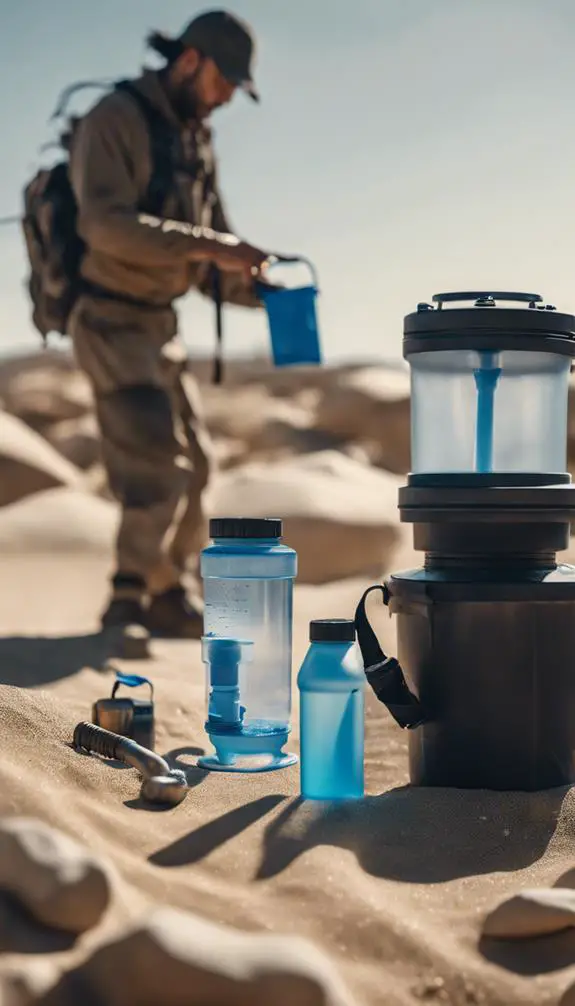
When disaster strikes, you'll need a reliable way to purify water to stay hydrated and healthy.
You've got three effective options to ponder: boiling water to kill bacteria and viruses, using water filters to remove contaminants, or utilizing UV light purification to destroy microorganisms.
Boiling Water Method
Most households have access to a heat source, making the boiling water method a reliable and straightforward way to purify water in a survival situation.
You'll want to prioritize water safety, as contaminated water can be deadly.
To effectively purify water, you'll need to bring it to a rolling boil for at least one minute.
This boil time is vital, as it will kill most bacteria, viruses, and other microorganisms.
At higher elevations, you'll need to boil for three minutes, as the lower air pressure affects the boiling point.
Water Filter Options
You've got a reliable method for purifying water through boiling, but what about when heat isn't an option?
That's where water filter systems come in. These systems use physical barriers to block contaminants, making them a great alternative to boiling.
When choosing a water filter, consider the type of contaminants you need to remove and the filter's maintenance requirements.
Some filters require regular cleaning or replacement of cartridges, while others can be backflushed to maintain their effectiveness.
Regular filter maintenance is vital to guarantee the system continues to remove contaminants effectively.
UV Light Purification
In a survival situation, having access to clean drinking water is crucial, and UV light purification is another reliable method to add to your toolkit.
This method uses UV sanitizers to kill bacteria, viruses, and other microorganisms that can contaminate your water supply. UV light therapy works by exposing the water to a specific wavelength of light, typically between 254-280 nanometers, which is lethal to most microorganisms.
This method is effective against giardia, cryptosporidium, and other waterborne pathogens. When choosing a UV light purifier, look for one that has a high UV output, a long lamp life, and a flow rate that meets your needs.
First Aid Kit Essentials
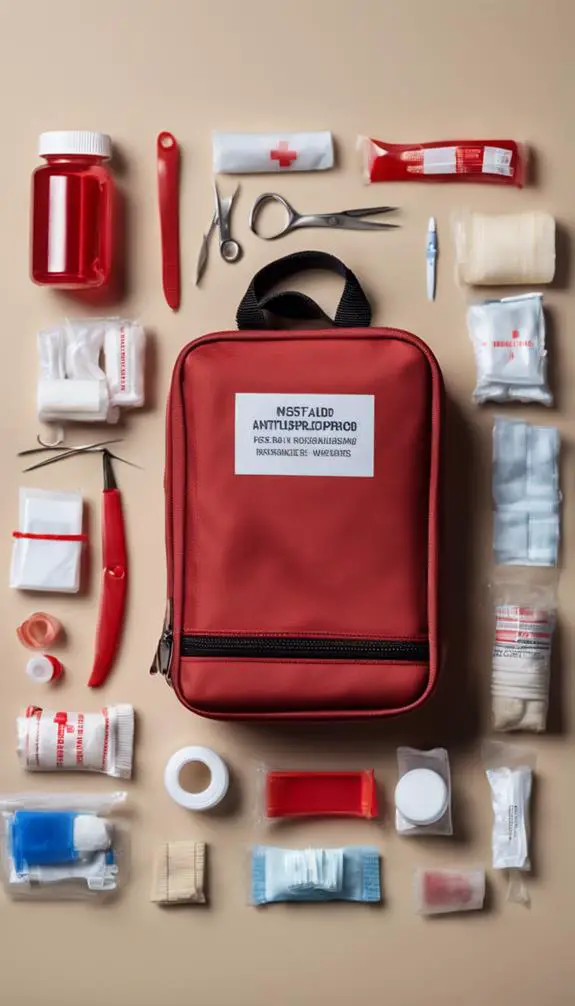
When disaster strikes, a well-stocked first aid kit can be a lifesaver, and it's crucial to include essentials that'll help you respond to emergencies.
You'll need supplies for wound cleaning, such as antiseptic wipes, antibiotic ointment, and sterile gauze pads. Don't forget pain management essentials like acetaminophen, ibuprofen, and aspirin.
Other must-haves include bandages, medical tape, and scissors. Consider adding a first aid manual or guidebook to help you navigate emergency situations.
Remember to check your kit regularly to confirm all items are up-to-date and not expired. By stocking your first aid kit with these essentials, you'll be better equipped to handle unexpected medical emergencies when they arise.
Safe Communication Options
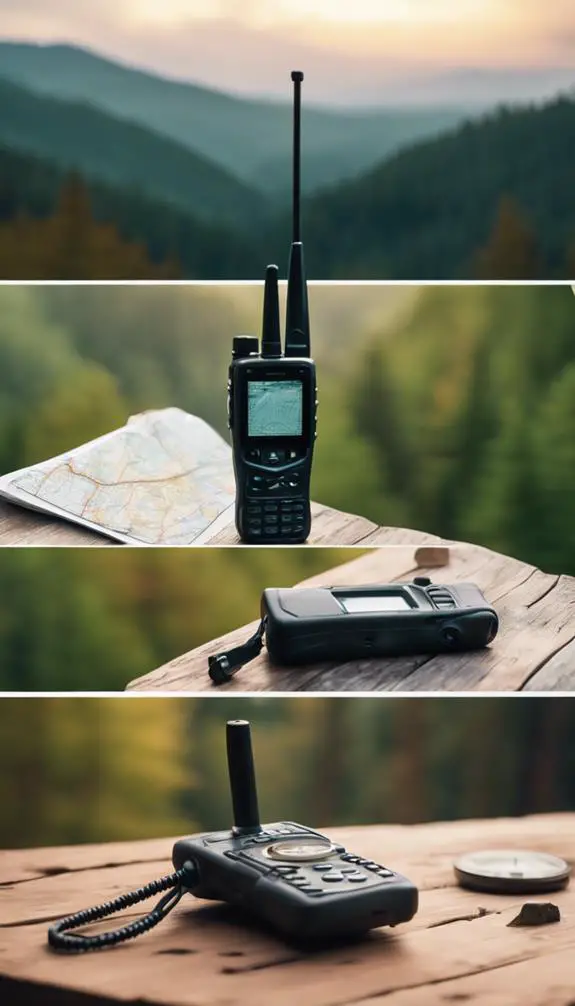
Your communication plan is only as strong as its weakest link, and in a doomsday scenario, that link is often the reliance on traditional communication methods like cell phones and internet.
These networks can be easily disrupted or shut down, leaving you isolated and vulnerable.
To stay connected with your loved ones and allies, you need secure communication options.
Consider investing in a satellite phone, which can provide a reliable connection even when traditional networks are down.
You should also explore secure messaging apps that use end-to-end encryption, ensuring your conversations remain private and protected.
Alternative Energy Sources
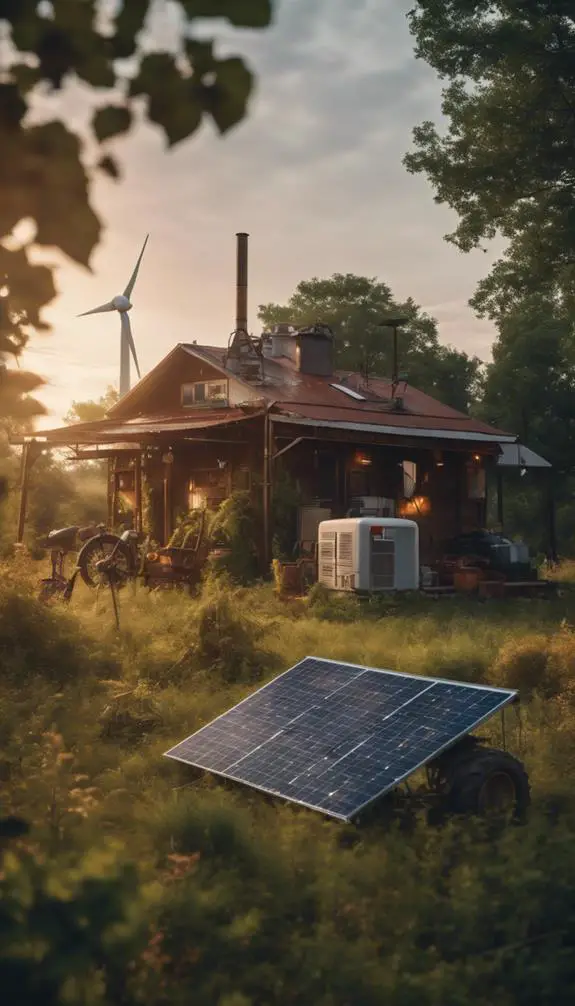
You'll need alternative energy sources to power your shelter and essential appliances when the grid goes down.
Solar power options, like photovoltaic panels and solar generators, are a reliable choice since they're quiet, clean, and require minimal maintenance.
Solar Power Options
Considering the unpredictable nature of modern society, having a reliable alternative energy source is essential for any doomsday prepper.
When it comes to solar power options, you have several choices to guarantee your off-grid systems stay powered.
Solar inverters, for instance, convert DC power from your solar panels into AC power for your home.
You can opt for a grid-tie inverter, which feeds excess energy back into the grid, or an off-grid inverter, which stores excess energy in batteries for later use.
With a well-designed off-grid system, you can enjoy independence from the grid and reduce your reliance on public utilities.
Renewable Energy Systems
Beyond solar power, a range of alternative energy sources can help you diversify your renewable energy systems and guarantee a reliable supply of power when the grid goes down.
You can explore wind power, hydro power, and geothermal energy to achieve grid independence. Wind turbines can be installed on your property, generating electricity from wind currents.
Hydro power harnesses energy from moving water, ideal for those with access to rivers or streams. Geothermal energy leverages heat from the earth to provide warmth and hot water.
Personal Safety Measures
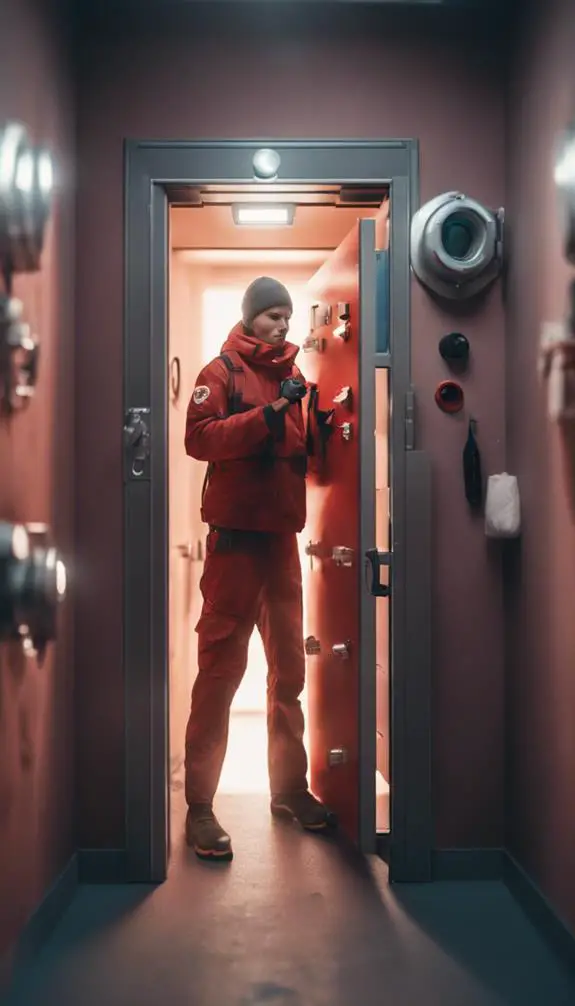
When the unthinkable happens, your personal safety becomes paramount.
You must be prepared to protect yourself and your loved ones from potential threats.
Start by establishing clear personal boundaries – know what you're comfortable with and what you're not.
This will help you respond appropriately in high-pressure situations.
Invest in self-defense training, such as martial arts or firearms instruction, to build your confidence and capabilities.
Consider carrying a non-lethal deterrent, like pepper spray, for added security.
Remember, personal safety isn't just about physical protection – it's also about being aware of your surroundings and trusting your instincts.
Staying Informed and Alert
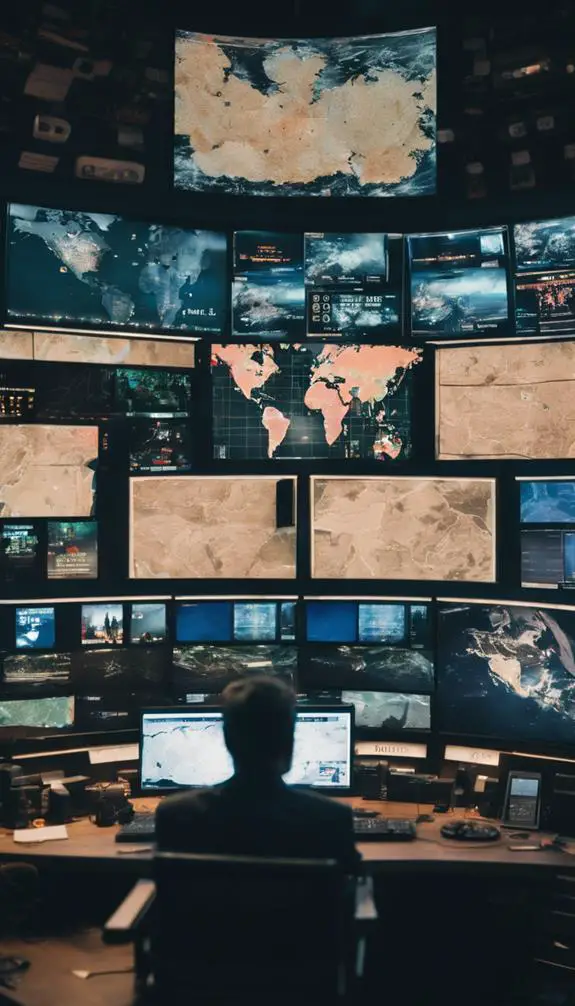
You need to stay informed about current events and emerging threats to anticipate potential dangers and make informed decisions.
You should regularly scan news sources, official reports, and social media to stay up-to-date on developing situations.
Stay Up-to-Date News
Staying informed is a critical aspect of doomsday prepping, as it allows you to stay ahead of potential threats and respond accordingly.
You need to stay up-to-date with current events, news, and trends that may impact your survival.
Set up a news aggregation system that delivers breaking news alerts to your phone or email.
This will keep you informed about developing situations that may require your attention.
Stay tuned to reliable news sources, and consider alternative news outlets to get a more well-rounded view of events.
Monitor Emerging Threats
Keep a finger on the pulse of emerging threats by tracking trends and anomalies that could signal an impending disaster.
You'll want to stay informed about potential biological risks, such as pandemics or bioterrorism, and cyber attacks that could cripple critical infrastructure.
Set up news alerts and follow reputable sources to stay up-to-date on developing threats.
Pay attention to patterns and anomalies in weather, economic, and geopolitical trends that could indicate an impending crisis.
Vehicle Emergency Kit
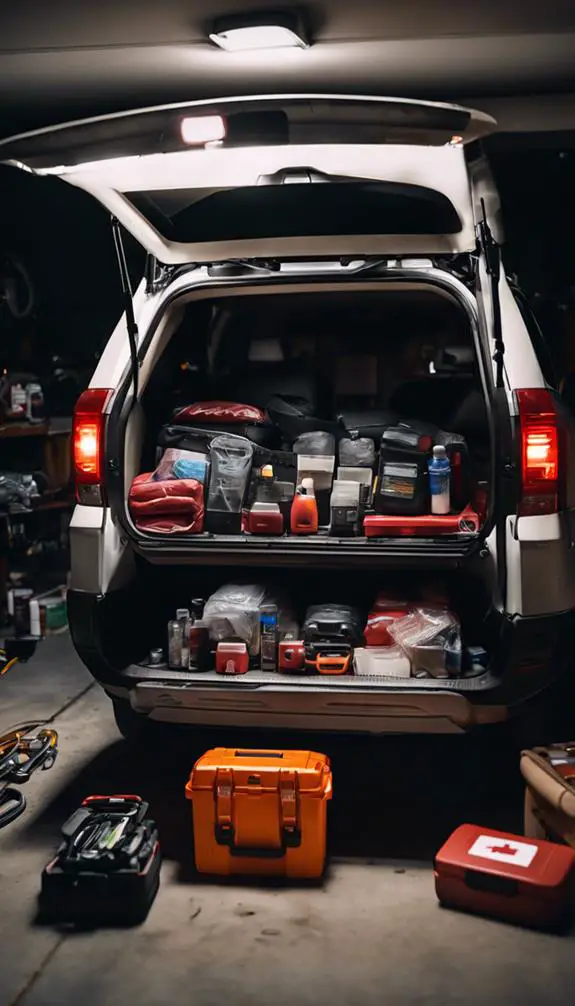
A roadside breakdown or accident can quickly turn into a survival situation, especially if you're stranded in a remote area with no phone signal.
That's why it's vital to have a vehicle emergency kit in your car at all times. This kit should include essential items like jumper cables, flashlights, first aid supplies, and a spare tire.
Don't forget to pack non-perishable snacks, water, and a warm blanket in case you're stuck for an extended period. Make sure you have a reliable means of communication, such as a two-way radio or a phone with a backup battery.
Also, review your Vehicle Insurance policy to confirm you have Roadside Assistance coverage, which can provide you with towing, fuel delivery, and other emergency services when you need them most.
Prepping on a Budget
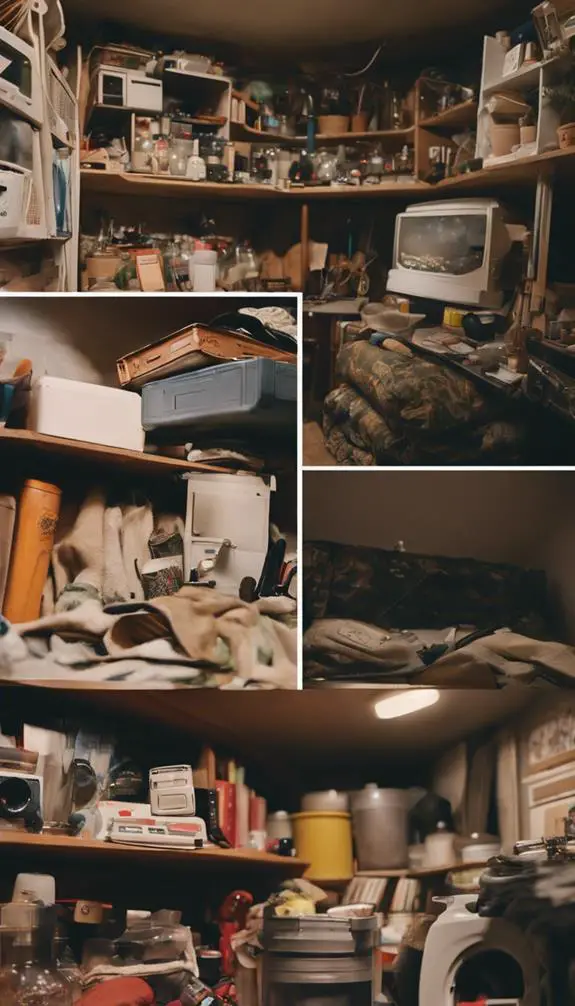
By the time you start building your doomsday prep kit, you may realize that it can be an expensive endeavor.
However, it's vital to remember that prepping doesn't have to break the bank. Adopting a frugal mindset will help you make the most of your budget.
Start by identifying budget-friendly suppliers for essential items like non-perishable food, water purification tablets, and first aid kits. Consider shopping during sales or using coupons to stock up on supplies.
You can also repurpose items you already own, like old containers or blankets, to reduce waste and save money. With a little creativity and resourcefulness, you can build an exhaustive doomsday prep kit without draining your finances.
Starting Your Preparedness Journey
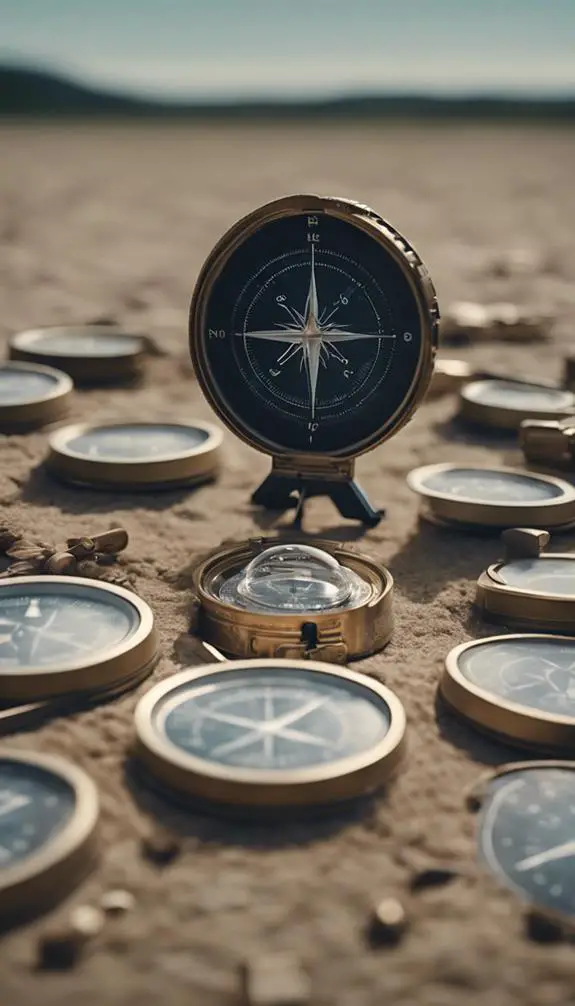
As you set out on your preparedness journey, this is vital to define what being prepared means to you.
Key to identify your goals and priorities, whether it's being ready for natural disasters, economic collapse, or personal emergencies.
Developing a prepper mindset means acknowledging that uncertainty is a part of life and taking proactive steps to safeguard your safety and well-being.
Consider the emergency scenarios that concern you most, such as power outages, food shortages, or forced evacuations.
What skills and resources do you need to overcome these challenges?
FAQs
How Do I Prep for Pets and Other Dependent Family Members?
When prepping for pets and dependents, you're ensuring their safety too. Invest in pet insurance, stock a pet emergency kit, and identify trusted veterinary care providers in your area, so you're ready for any scenario.
Can I Prep if I Live in a Small Apartment or Condo?
You can prep even in a small apartment or condo by prioritizing space optimization, focusing on compact, multi-use items, and planning for urban survival strategies that don't require a large storage space or backyard.
How Long Does It Take to Become Fully Prepared?
You'll create a prepared timeline by focusing on skill development, starting with the essentials like water storage and food supply, then building on those skills to achieve full preparedness over several months to a year.
Is Prepping Only for Extreme, Catastrophic Events?
You're thinking prepping is only for extreme, catastrophic events, but it's not just about that. You're preparing for daily emergencies, like power outages or car accidents, and even financial collapse, so you're ready for anything life throws your way.
Can I Involve My Children in the Prepping Process?
You can involve your kids in prepping by assigning them age-appropriate tasks, like gathering supplies or creating a family emergency plan, fostering kids' roles and family bonding while teaching them valuable skills and responsibility.
Conclusion
You've taken the first steps towards doomsday prepping, and that's a huge accomplishment. Now, keep building your emergency fund, stocking your pantry, and refining your family plan. Stay informed, and don't be afraid to adapt your strategy as new threats emerge. Remember, preparedness is a journey, not a destination. By staying committed, you'll be ready to face whatever the future holds. Keep prepping, and you'll sleep better tonight knowing you're one step ahead of disaster.


